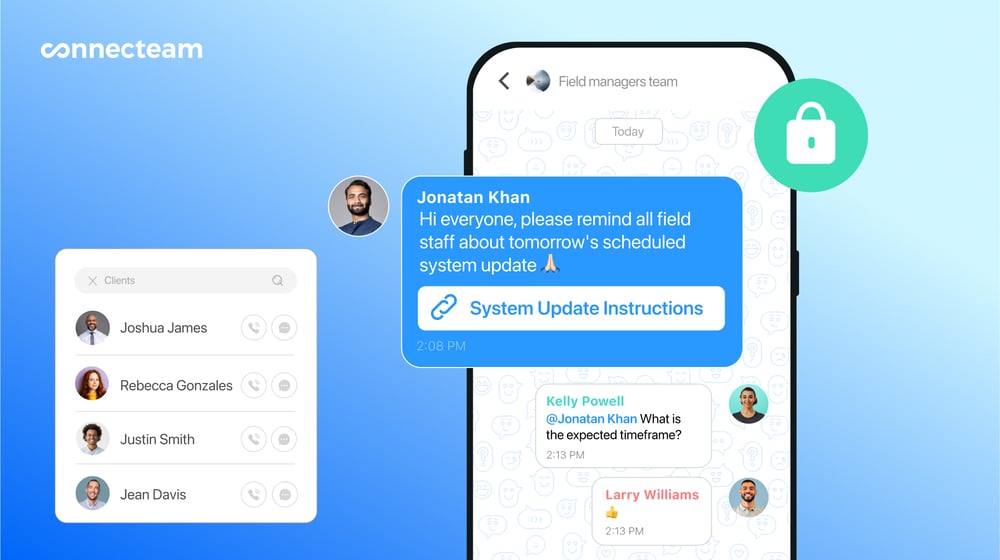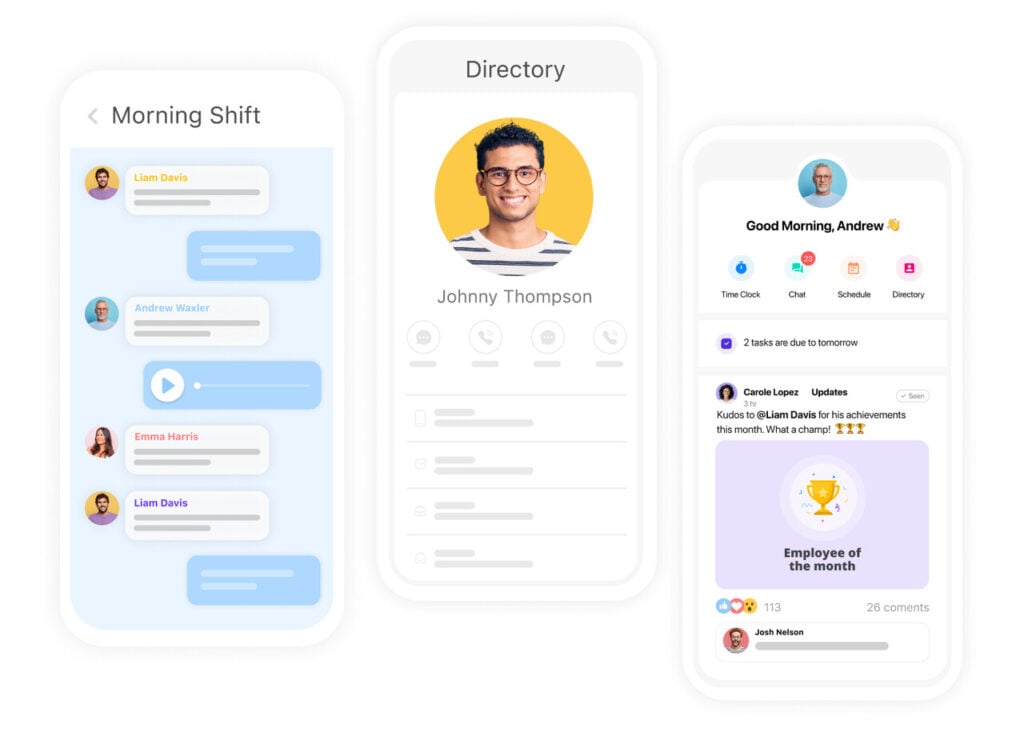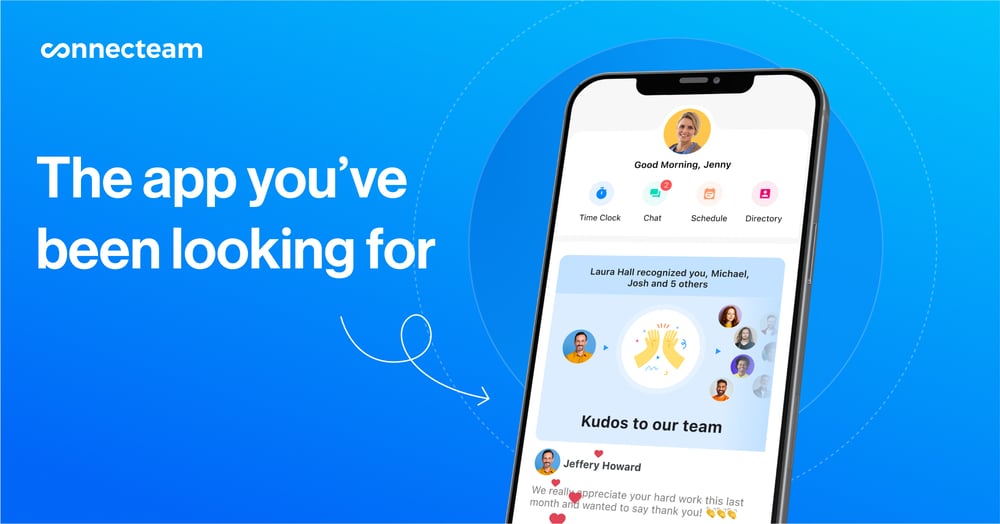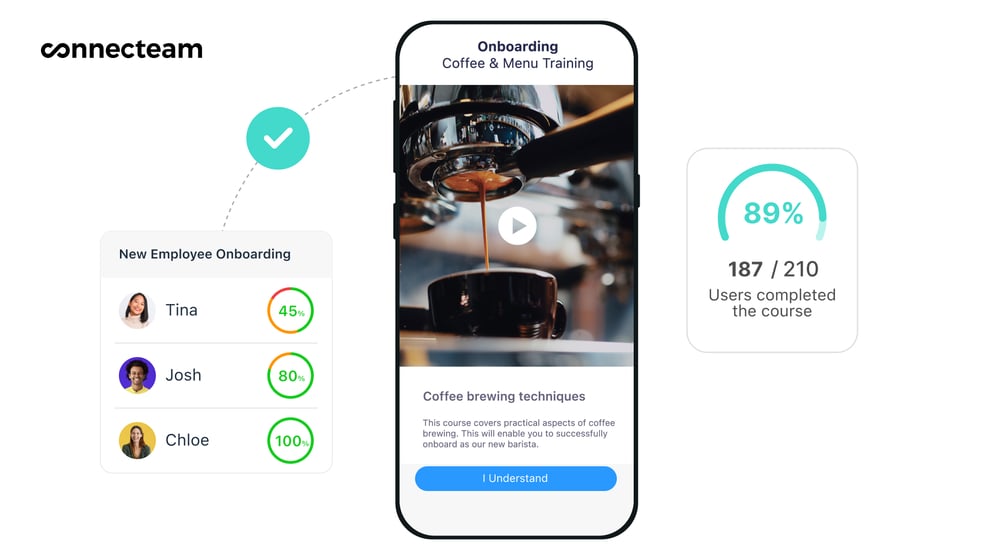This article explores the benefits of transparent communication in the workplace and offers tips on how you can achieve it.
The COVID-19 pandemic brought about a significant shift in workplace culture and expectations. As the world recovered, many workers reevaluated how they view the importance of work-life balance.
Reprioritization has led a record number of people to leave their jobs in search of companies that are more aligned with their values.
In the current climate, workers expect to be treated well by employers, and they want to feel like a valuable part of the team. Transparent communication between you and your employees is key to creating happier team members who feel appreciated and want to work hard for your company.
With the right set of communication tools, you can foster transparent communication among employees at all levels of your company.
How do you create a culture of open and honest communication in your workplace, you ask?
First, you need an understanding of transparent communication and the tools you need to implement this philosophy at your own company.
What Is Transparent Communication?
Transparent communication is the practice in which information — both good and bad — is clearly and openly shared throughout all levels of your company.
With this type of communication style, you share information:
- Upward: Members of your workforce can openly communicate with their managers.
- Downward: Members of your management team have the proper channels, tools, and ability to freely communicate with their employees.
- Horizontal communication: Employees at every level can openly communicate with their peers.
Read more on Downward Communication: Definition, Benefits, and How to Use It
Transparent communication doesn’t have to be complex. It can be as simple as a company scheduling weekly meetings, utilizing chat messaging, or sending out internal newsletters to explain its latest strategies, news, and decisions.
Transparency benefits employers and employees alike, and when an organization prioritizes communication, it has tangible benefits.

Why Transparent Communication in the Workplace Matters
There are plenty of reasons to adopt an atmosphere of transparency at your company. For one, it improves morale.
In a recent survey, 68% of employees indicated they wanted more transparency from their company.
Many of these respondents believed their work-life balance would improve as a result.
Here are five additional benefits your organization can experience when you embrace transparent communication efforts.
-
Increased Innovation
-
Increased Trust
-
A More Engaged Workforce
-
A Better Brand Identity
According to the Society for Human Resource Management, clear, upward communication is necessary to drive innovation. In many companies, employees in non-managerial positions are hesitant to deviate from normal procedures out of a fear of communicating failures to management.
To innovate, however, you need to be comfortable with failure. Members of your team should feel supported enough to share ideas and contribute to process improvements. It can lead to great things.
Legend says that in the early 1900s, for example, a factory worker at a matchmaking company approached management with the idea to only apply sandpaper to one side of its matchboxes.
This innovation saved the company hundreds of thousands of dollars, all because someone on the front lines felt compelled to speak up.
Your employees at all levels are full of ideas. Create a culture where they feel empowered to speak up and encourage employees to take risks. Some of these ideas may not pan out, but your employees will appreciate the opportunity.
Pro Tip
Use an employee communication app such as Connecteam to implement a digital suggestion box system. This way you can easily collect ideas and suggestions from anybody in your company and easily act on worthy ideas.
Get started with Connecteam for free today!
Transparent communication is one of the best ways to build trust between you and your employees. When you’re open and honest about your decision-making procedures, your leadership team seems more approachable, and your employees feel more valued.
Offering a culture of trust will help reduce turnover, as employees who trust their employers are less likely to quit their jobs.
Employees at all levels of your company are more likely to engage if you encourage transparency. This is because they will feel more empowered to approach you and discuss ways in which you can help make their work more meaningful.
Top talent often leave organizations when their needs aren’t being met. Offering open lines of communication and healthy, honest discussions about strategies and decisions helps your employees address workplace issues before they reach this point.
These days, companies across industries are competing for the best talent, so your brand needs to stand out to attract the right people. Internal events, employee recognition programs, and a social media-style communication feed fosters peer-to-peer engagement.
Prospective employees will hear about a strong company culture as they look into your organization on sites like Glassdoor, Indeed, and LinkedIn.
By laying the foundation for honest, clear communication with your current employees, you’re also establishing your organization as a great place to work — and do business with.
What Can a Lack of Transparency do to a Workplace?
Trust takes a hit:
Trust is the foundation of any successful team or organization. Without transparency, trust erodes, leaving employees questioning each other’s motives and intentions. Productivity suffers as people become guarded and reluctant to collaborate.
The rumor mill goes into overdrive:
In the absence of clear and open communication, speculation and rumors run wild. Employees start filling in the gaps with their own narratives, leading to misinformation and unnecessary anxiety. Instead of focusing on their tasks, they spend time deciphering truth from fiction.
Motivation dwindles:
When employees feel left in the dark or believe their opinions don’t matter, their motivation wanes. Lack of transparency breeds disengagement and apathy. People become disconnected from the organization’s goals, resulting in decreased productivity and missed opportunities.
Conflicts escalate:
Misunderstandings and misinterpretations flourish when transparency is lacking. Without clear communication channels, conflicts arise and fester. Teams become divided, productivity plummets, and the work environment turns toxic.
How to Promote a Culture of Transparent Communication
If you don’t already have a culture of open sharing, take these steps to be more transparent in the workplace.
-
Nurture Relationships at All Levels
- Being consistent
- Avoiding gossip
- Providing a supportive atmosphere
- Clearly communicating guidelines and expectations
-
Show Vulnerability
-
Be Open to Feedback
-
Be Consistent
- Company newsletters
- Employee feedback sessions
- Instant messaging
- Anonymous surveys
-
Engage Your Team
-
Be Accountable
-
Be Inclusive
-
Keep Information to Yourself When Needed, but Explain Why
-
Celebrate Your Culture of Transparency
- Your mission and values statements
- Your company website
- Job postings and descriptions
- Company social media accounts
Employees like working for companies where they feel valued. Fostering relationships at all levels is one of the easiest ways for an organization to accomplish this. You can nurture relationships by:
Use digital communication tools like Connecteam’s scheduling app to set up regular meetings with team members and managers to check in and address pressing topics. Regularly pencil in time for team building so your employees can connect and share things they have in common.

Transparent communication is a key factor in helping employees weather challenges in the workplace. Some leaders may be tempted to shield their teams from difficult news or growing concerns.
However, authenticity and sincerity (especially in the face of adversity) help people trust you, and trust is crucial to any healthy relationship.
Transparency starts at the top. Encourage your managers to use open and honest communication with their employees and with one another. Have your management team ask for feedback from your employees and use their insight to make improvements. If employees think you’re not acting on their feedback, they may stop offering it.
Some employees might not be comfortable bringing up sensitive topics. In this case, consider offering them the ability to remain anonymous. That way, you can maintain a trusting relationship with everyone on your team while addressing sensitive workplace issues.
When you’re setting up a culture of transparency, be consistent, and make sure everyone at all levels can get the feedback that works best for them. Use these tools regularly for the best effect:
Did You Know?
Connecteam offers a chat feature you can use to celebrate team members for a job well done, share pertinent information, and hold discussions with your team members all from one app.
Get started with Connecteam for free today!
Use an engagement platform like Connecteam to recognize your team when they’re doing well. Celebrate successes and incentivize workers who share great ideas using digital rewards.
You can even create informal community chat groups to encourage camaraderie and maintain a record of important team milestones to let your workforce know you appreciate them.

Set clear lines of responsibility for tasks and processes. When each team member knows their responsibilities, they can better understand their expectations and be held accountable. Accountability is also key in encouraging your team members to share their ideas.
Being accountable does not mean punishing your team for every mistake. Some errors are more costly than others and need to be addressed. However, most failures offer your team the chance to learn and grow. When mistakes happen, get your team together to discuss the situation and develop solutions to keep them from happening in the future.
Pro Tip
Make sure your employees can control the metrics you use to hold them accountable. Only 21% of employees feel that they are being held accountable for factors within their control.
Invite employees at all levels to participate in decision-making. Give each member of the team a chance to voice their opinions and devise company-wide solutions. Allowing everyone to participate in decision-making helps build stronger team relationships, and it can help you find solutions your management team may not have considered.
Make participation easy for all by using terminology everyone can understand, particularly if you’re inviting participation from people who work in different parts of your business. Each team might have different jargon and acronyms they use daily, but your other workers won’t know these terms and may feel left out.
There will be times in which you can’t share information with your team. If you’re involved in a lawsuit, a merger, or another legal matter, you may be bound by strict confidentiality. Whatever your reason for withholding information, be honest with your employees about why you’re doing it.
If you’re not honest, your employees may think you’re hiding something from them, which breaks the trusting relationship you’ve worked so hard to build.
After you’ve implemented transparent communication practices across your company, include it in your corporate branding. Promote your commitment to transparency in:
Highlight your employees and their ideas on social media to show that you appreciate your team. Finally, use transparent communication in your recruiting, hiring, and onboarding practices so your new team members know what to expect from the beginning.
Being dedicated to your employees and their development is a great tool for helping you attract and retain talented workers.

User Modern Communication Tools to Improve Transparency
Once you’ve taken the steps to build transparency, maintaining regular, open communication is the best way to continue fostering a culture of trust. The right set of tools and policies will help you keep your momentum going.
Instant Messaging
Instant messaging systems like those available through Connecteam allow your team to keep in touch with one another while on the go, across dispersed locations, and over different schedules — even if they haven’t saved all their coworkers’ phone numbers.
Instant messaging lets field team members communicate with their managers when facing challenges or making decisions on-site, and they allow team members to connect with one another to problem-solve and share ideas in real time. The right tool provides secure chats for groups or 1-on-1 chats, and managers should be able to easily control permissions and minimize the distraction that can crop up with too many private side chats.

Productive peer-to-peer conversations can happen easily in a communication app. When workers run into issues, they can chat with others on your team to ask if anyone else has encountered the same problem and, if yes, how they fixed it. They can see if others are available to help or lend ideas, too. Access to regular messaging helps teams feel connected and supported by their colleagues and managers alike.
Anonymous Surveys
Some feedback can be difficult to hear, and it can be just as hard to share. Team members may be hesitant to offer feedback unprompted, but a survey can break the ice, soliciting ideas and input on specific topics.
Allowing your team members to stay anonymous may make them feel more comfortable discussing difficult issues, leading to more open and honest insights and data from your team.
You can time your surveys strategically to gather quick, real-time feedback after changes are implemented, or you can maintain a regular cadence to monitor employee sentiment and progress on any known issues.
For example, one worker might have a problem with a scheduling system they perceive to be unfair, but they might not want to bring it up directly with their manager or in front of their colleagues for fear of sounding whiny.
An anonymous survey allows this employee to voice their opinion without worrying about being penalized, and if multiple employees share a similar concern, their manager may see an opportunity to take that feedback under consideration and make changes.
This Might Interest You
Check out our in-depth review of the best survey tools you can use in your business.
Job Checklists
When creating a culture of accountability, you need a way to help everyone on your team understand their responsibilities. With Connecteam’s task assignments and job notes, you can create checklists to help your team remain consistent.
Checklists also hold each team member accountable for their daily tasks. Job checklists are also great during onboarding, helping new employees establish a routine and become familiar with their daily tasks while promoting a sense of accomplishment as they move through the list.
Other accountability features like schedule reminders can help motivate your team and foster responsibility.
Internal Newsletters
Your marketing team might develop newsletters to keep customers in the know. Businesses can use the same approach to stay in touch with employees. Regular internal newsletters with updates and announcements let you share important company insights and valuable content among your team, all in one go.
When team members receive the same central communication at the same time, they’re all on the same page — and they may even find something interesting to chat about during a break or downtime.
Use your internal newsletters to be open and honest about what’s happening in your company. For example, if you own a construction company, you’re likely dealing with inflation and supply chain issues. Offer information about what you’re doing as a company to deal with these cost increases and show your team that they are valued enough to be included in these considerations.

Employee Recognition and Rewards
Regularly offering shout-outs and kudos for a job well done helps teams build a positive culture. Look for occasions to celebrate your team, like wishing them a happy birthday and work anniversary and congratulating them on their successes, both in their personal lives and on the job.
Someone may have found a new way to solve a common problem on their job site. An employee could have gone above and beyond when serving a customer. To encourage transparent communication, use this tool to reward team members who speak up and contribute good ideas or necessary critical feedback.
Recognizing and rewarding these contributions — whether through verbal praise in front of the team, physical rewards like a small gift card for a free coffee, or both — helps encourage others to speak up, when they see it’s appreciated.
Did You Know?
More than 80% of employees say recognition motivates them to succeed. Connecteam offers a range of employee recognition features that easily let you recognize and reward your best performers.
Get started with Connecteam for free today!
Leadership Blog
Writing a monthly or quarterly blog is an excellent way for business owners and managers to connect with their teams and showcase their human side. If you’re good with words, writing down your thoughts to share with your team is a great way to offer glimpses into your personality and into what motivates you and the business you’re building, both of which can help forge a stronger connection with your team members.
If you’re writing about general company news, sprinkle in some references to your favorite television show or sports team. Next time you’re chatting with employees, ask if anyone else is watching. Don’t worry too much about commanding respect and reiterating business talking points, but embrace the opportunity to share your perspective on the problems you’re solving.
The better your employees understand who you are and where you’re coming from as a person and a business leader, the more likely they are to feel comfortable approaching you with issues and ideas.
Onboarding and Training Software
Not only does transparent communication make it easier to standardize the onboarding and training process, but it’s also the perfect opportunity to set the precedent of open, honest, and accessible communication within your business.
Capture your processes with onboarding and training software. Connecteam lets you create quizzes, upload training materials, and generate checklists for your onboarding team so that every new employee knows what you expect from them from day one. A centralized process ensures new hires aren’t receiving conflicting information from different supervisors or missing out on something all their coworkers learned in week two.
Don’t forget to follow up during and shortly after onboarding, too. With regular meetings and employee feedback, you can learn what’s working well during training and onboarding and what could use some tweaking, so you can iterate and improve for the next time and create a consistently successful approach.

The Final Word on Transparent Communication
Transparent communication in the workplace is an integral part of keeping your employees engaged, happy, and productive. Fostering open and transparent communication and building a culture of trust in your business lets you empower employees at all levels to share their ideas and contribute to your company’s success. You must be vulnerable and open to constructive feedback to do it well. You also need the right communication tools.
Connecteam’s employee management tool gives you multiple resources you can use to stay in touch with your employees and keep them informed. Take advantage of features like team chat, scheduling tools, job checklists, onboarding materials, and recognition tools to engage your team and raise their morale.



